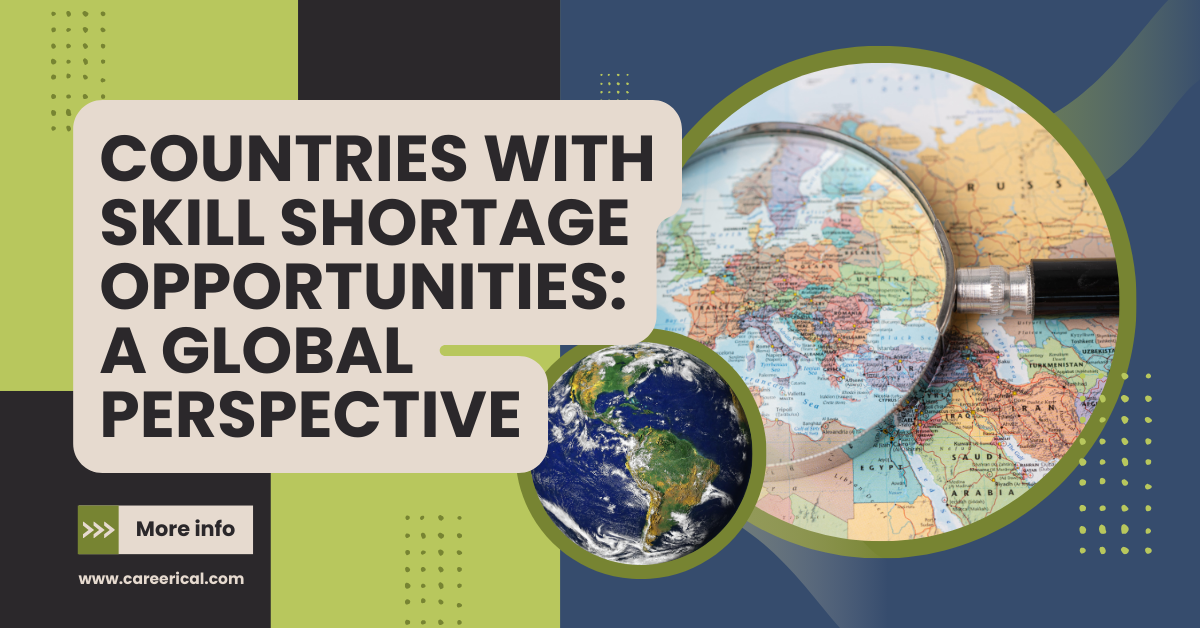💼 Countries with Skill Shortage Opportunities in 2024: A Global Perspective
In 2024, the global economy confronts a critical challenge: skill shortages. This phenomenon, where the existing workforce’s abilities fail to match employer requirements, results in unfilled job positions, hampering economic growth and productivity.
Our extensive guide dives into how nations including Japan, Germany, Denmark, Chile, Ireland, Portugal, Australia, New Zealand, the United Arab Emirates, North America, and Singapore are addressing these hurdles.
- The Root of Skill Shortages
- 1. Japan’s Approach to Skill Shortages
- 2. Tackling Skill Shortages in Germany
- 3. Denmark’s Strategy
- 4. Chile’s Response to Labor Gaps
- 5. Ireland’s Employment Permits
- 6. Portugal’s Seasonal Work Visa
- 7. Australia’s Points-Based Immigration
- 8. New Zealand’s Skilled Migrant Category
- 9. UAE’s Diverse Visa Options
- 10. North America’s Immigration Programs
- 11. Singapore’s Tech-Focused Visas
- Conclusion
The Root of Skill Shortages
Skill shortages stem from rapid technological evolution, global economic shifts, aging populations, and mismatches between educational outputs and market demands.
These factors create gaps in key areas like Information Technology, Healthcare, Robotics, and others, affecting various sectors globally.
Let’s explore how specific countries are using immigration programs to fill these gaps:
1. Japan’s Approach to Skill Shortages
Japan faces a shortage in Information Technology, Healthcare, Manufacturing, Construction, and Robotics, primarily due to its aging populace and tech advancements. Programs like the Specified Skilled Worker (SSW) and Highly Skilled Professionals (HSP), alongside J-Skip and J-Find Visas, offer benefits like expedited processing and tax exemptions for skilled immigrants (Educads.com).
Recommended: 💼 Expert Tips and Tricks to Land High Paying Online Jobs 2024
2. Tackling Skill Shortages in Germany
Germany’s new ‘opportunity card’, based on a points system, aims to alleviate workforce shortages in skilled crafts, engineering, IT, and healthcare. This initiative facilitates the immigration of skilled professionals, shortening the path to permanent residency for skilled workers and EU Blue Card holders (Euronews.com, Fragomen.com).
3. Denmark’s Strategy
Denmark is addressing shortages in science, engineering, healthcare, and IT through its Positive List for higher education and Skilled Workers list. The country has also reduced the pay threshold for recruiting third-country nationals and extended job search periods for international graduates (Euronews.com).
4. Chile’s Response to Labor Gaps
Chile, facing shortages in Agriculture, Mining, IT, and Tourism, has streamlined work visa programs like the “Subject-to-Contract” Visa and Temporary Residence Visa for Job Search (Visa SUJE), catering to various professional categories.
5. Ireland’s Employment Permits
Ireland offers the Critical Skills Employment Permit and General Employment Permit to address labor gaps. The country also provides a working holiday visa for young adults from select countries.
Recommended: 🇨🇦 Understanding Canada’s Work Permit Varieties: Decoding the Differences Between LMIA, NAFTA, and CETA Permits
6. Portugal’s Seasonal Work Visa
Portugal introduces a seasonal work visa for up to nine months, allowing flexibility for workers in seasonal industries. Longer-term visas cater to various professions based on the job’s duration and nature.
7. Australia’s Points-Based Immigration
Australia fills skill gaps with the Skilled Independent Visa and Temporary Skill Shortage Visa, part of a points-based system favoring skilled professionals.
8. New Zealand’s Skilled Migrant Category
New Zealand’s Skilled Migrant Category visa targets individuals with in-demand skills, supplemented by visas for entrepreneurs and investors.
9. UAE’s Diverse Visa Options
The UAE offers Employment Visas and long-term Residence Visas for foreign workers, investors, entrepreneurs, and specialized talents.
10. North America’s Immigration Programs
Canada
Canada’s Express Entry and Provincial Nominee Programs target skilled workers to address labor shortages.
United States
The U.S. relies on EB-2 NIW, EB-3 Skilled Workers, and H-1B Specialty Occupation visas to attract global talent.
11. Singapore’s Tech-Focused Visas
Singapore combats skill shortages with Tech.Pass, EntrePass, and Employment Pass, focusing on attracting tech talent.
Conclusion
As we continue through 2024, understanding and addressing global skill shortages remains crucial for economic development. Each nation’s unique approach reflects its specific needs and the dynamic nature of the global labor market.
This guide offers insights into the varied strategies employed globally, highlighting the importance of international talent mobility in today’s interconnected world.
More Updates:
- 🇬🇧 Navigating the Transition to a UK Visa: Family Dependents’ Status and Comprehensive Fee Guide for 2024
- 👨🏼💻 40+ Fully Work From Home Jobs You Can Apply For In 2024
- 🇬🇧 Top Firms Granting Free UK Work Permit Sponsorship in 2024
- 🇬🇧 Important Updates on UK Immigration: Working in UK with Tourist VISA in 2024
- 🇨🇦 Canada’s New Frontier: Granting Remote Work Visa in 2024
